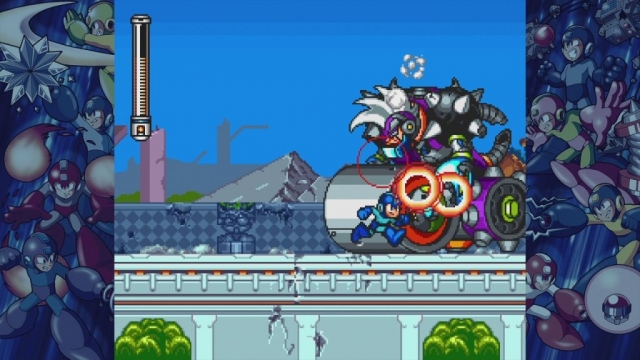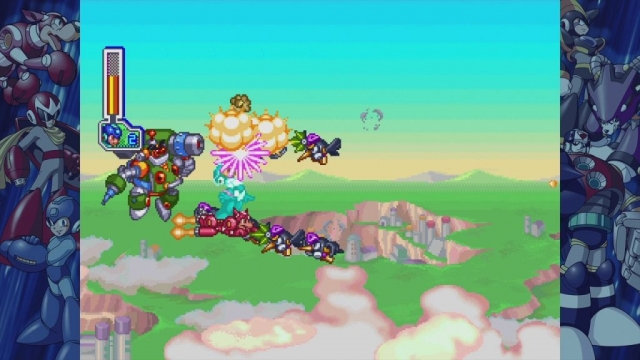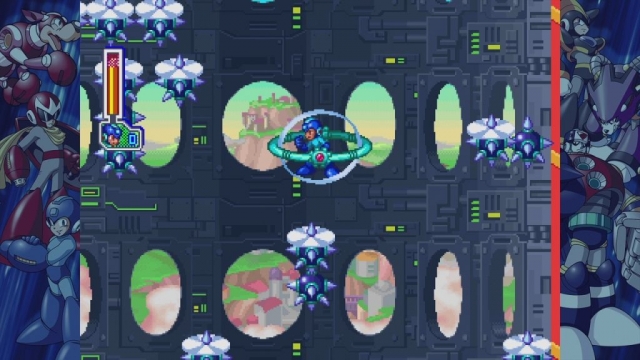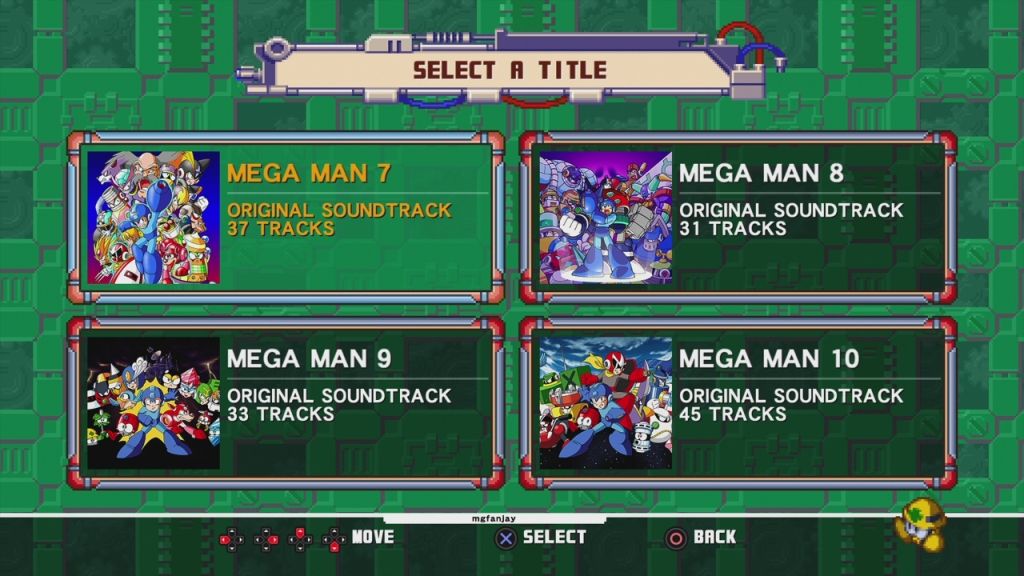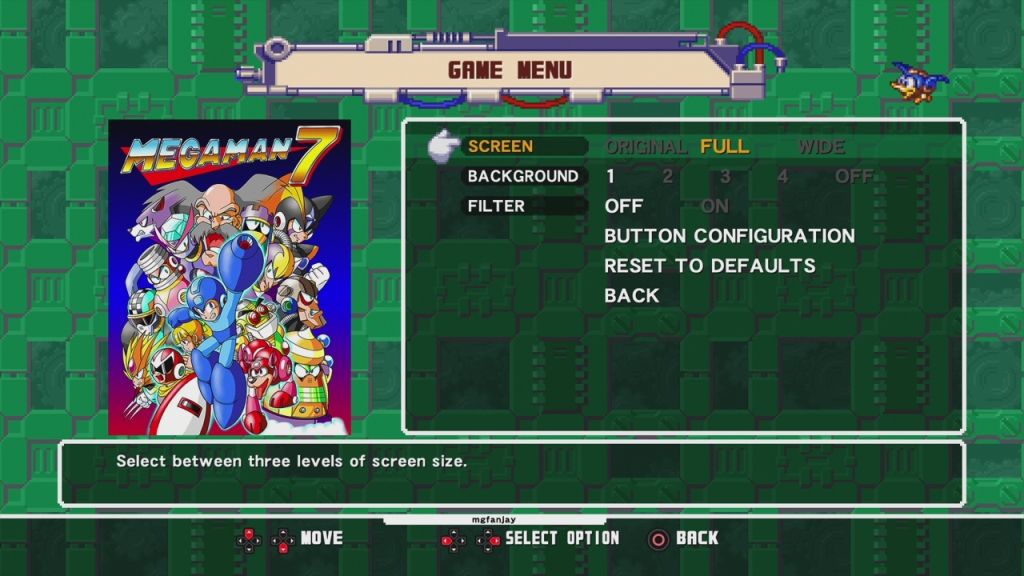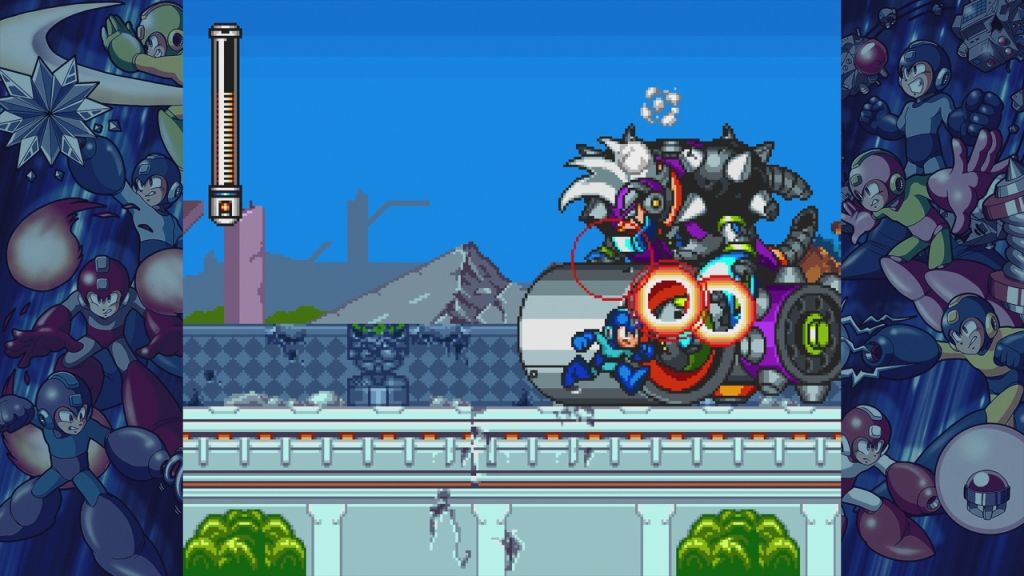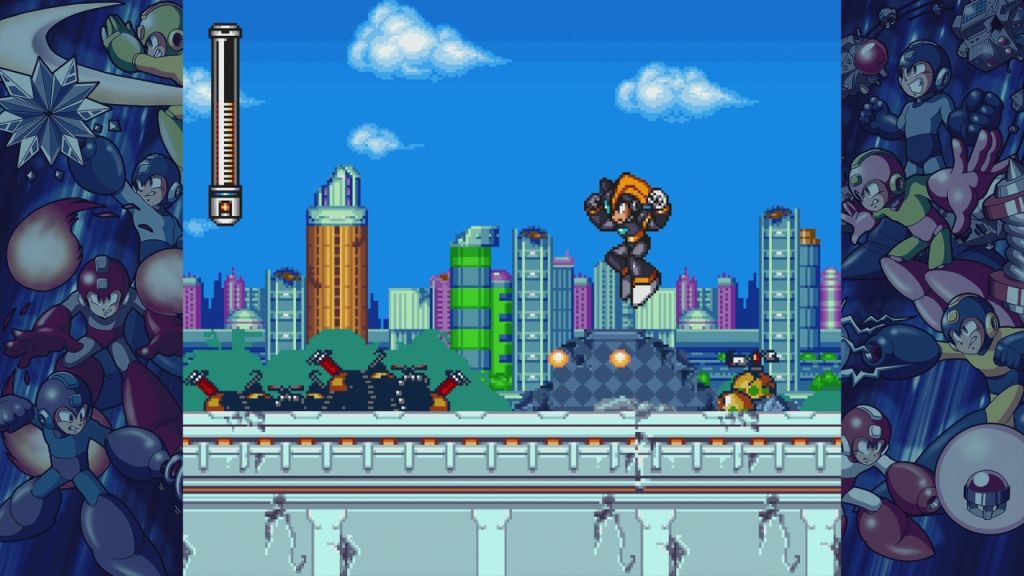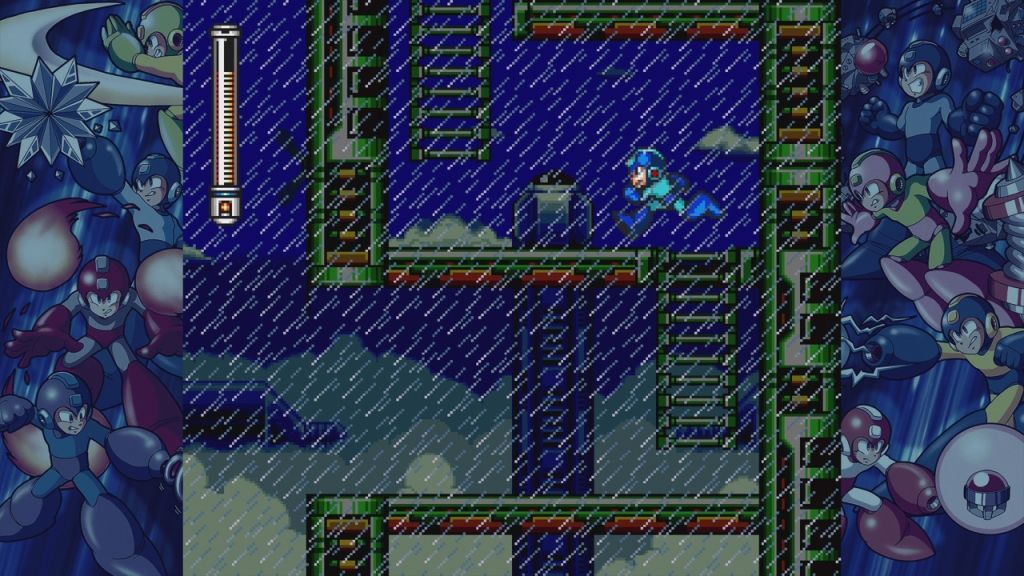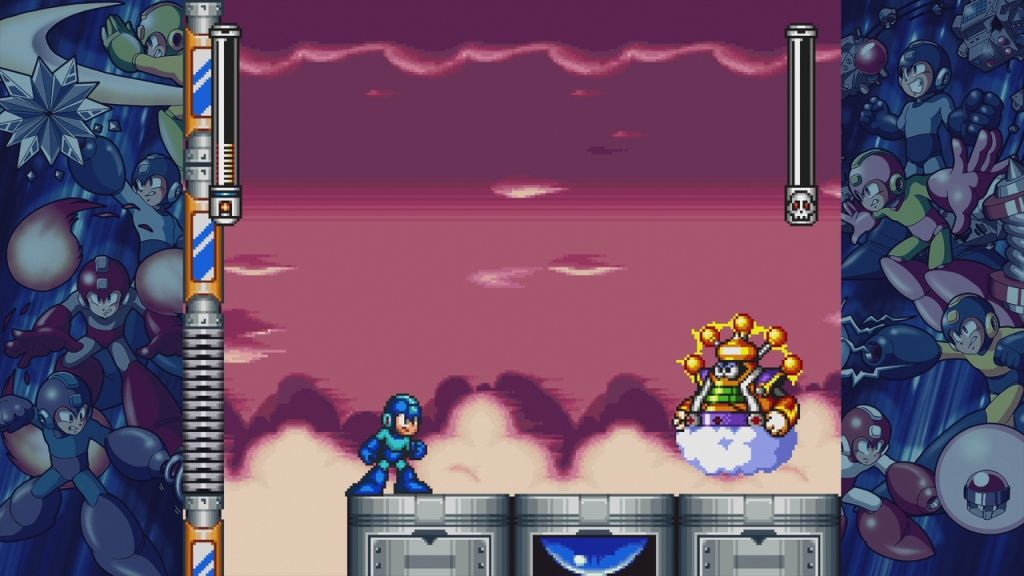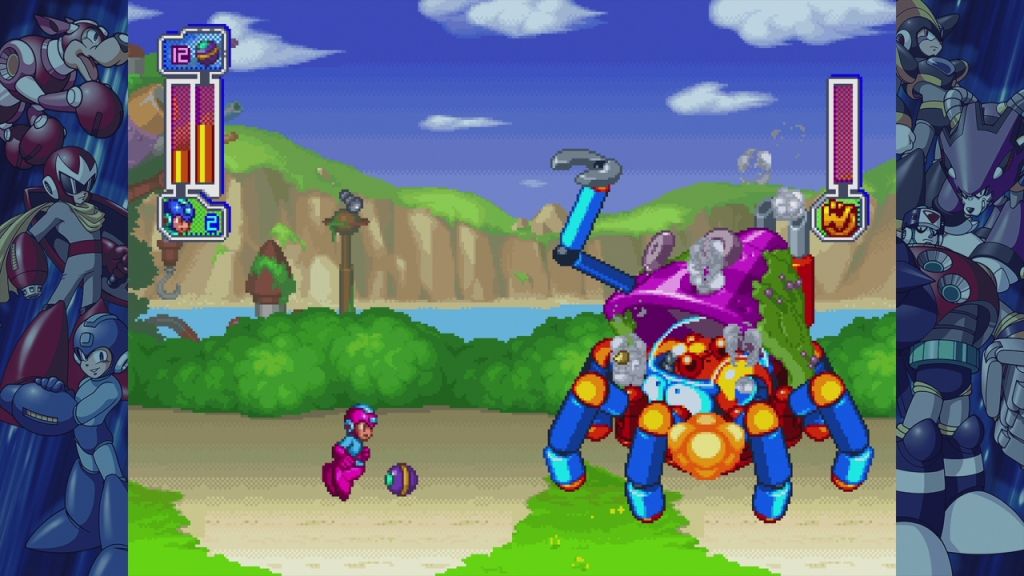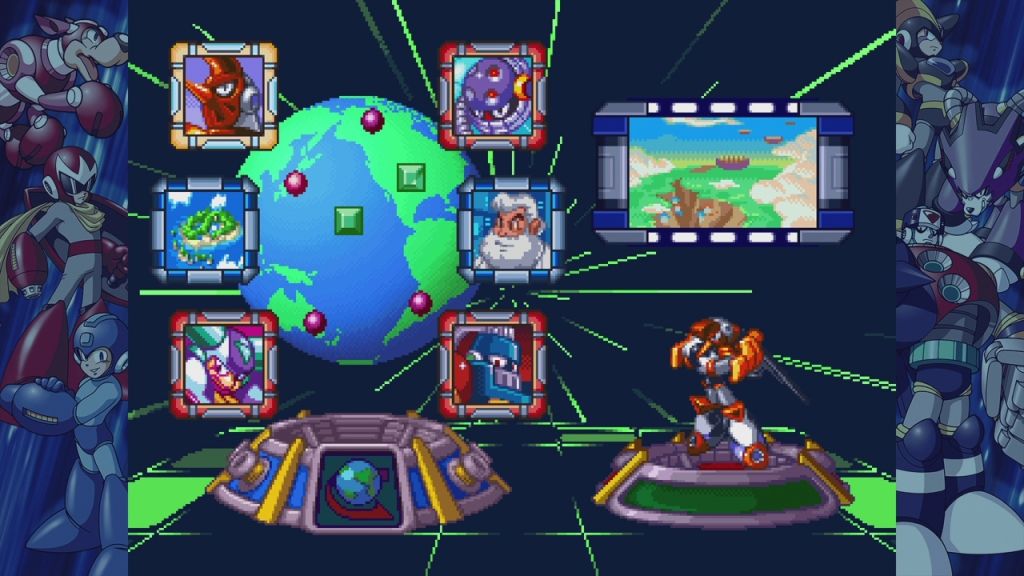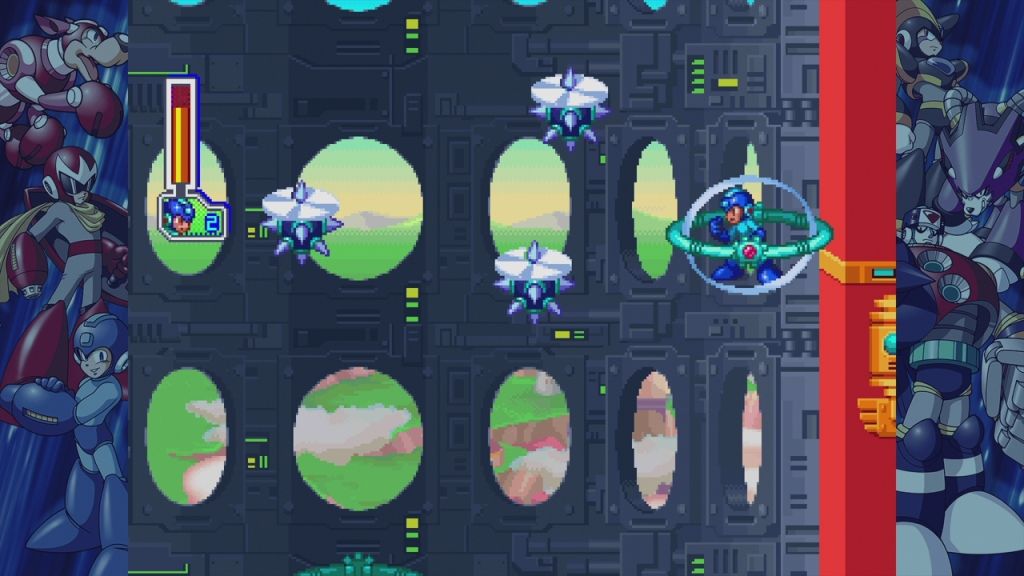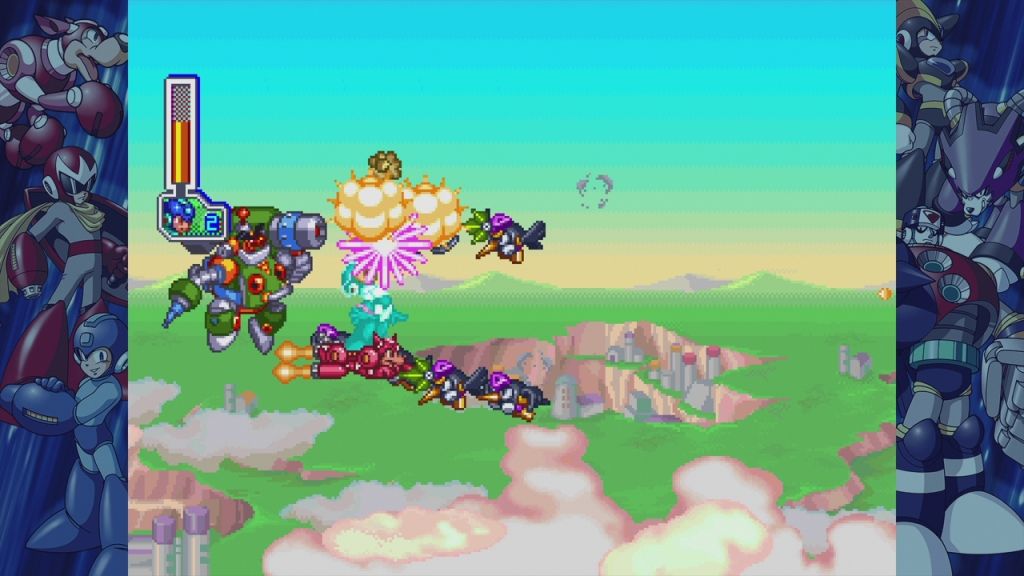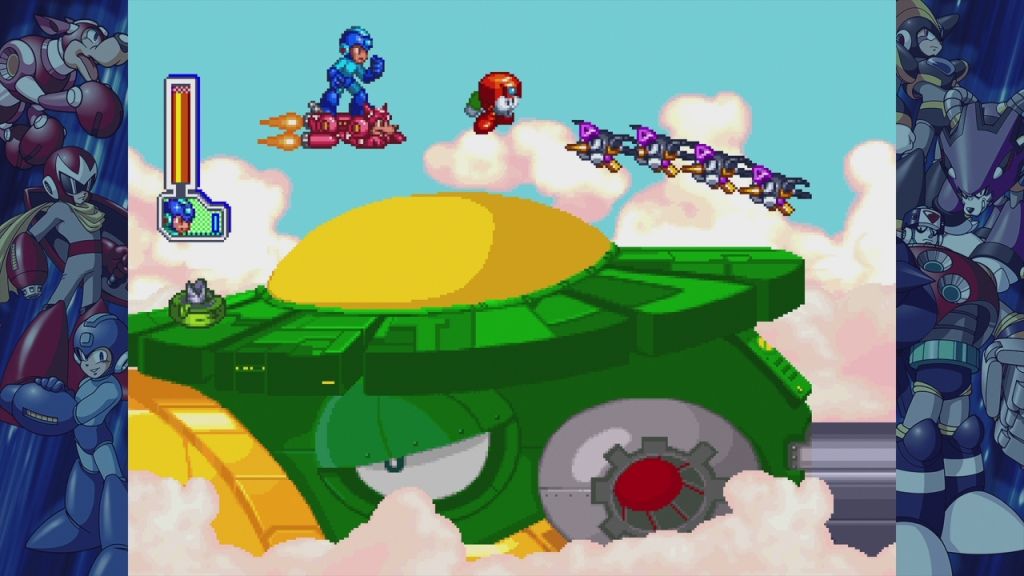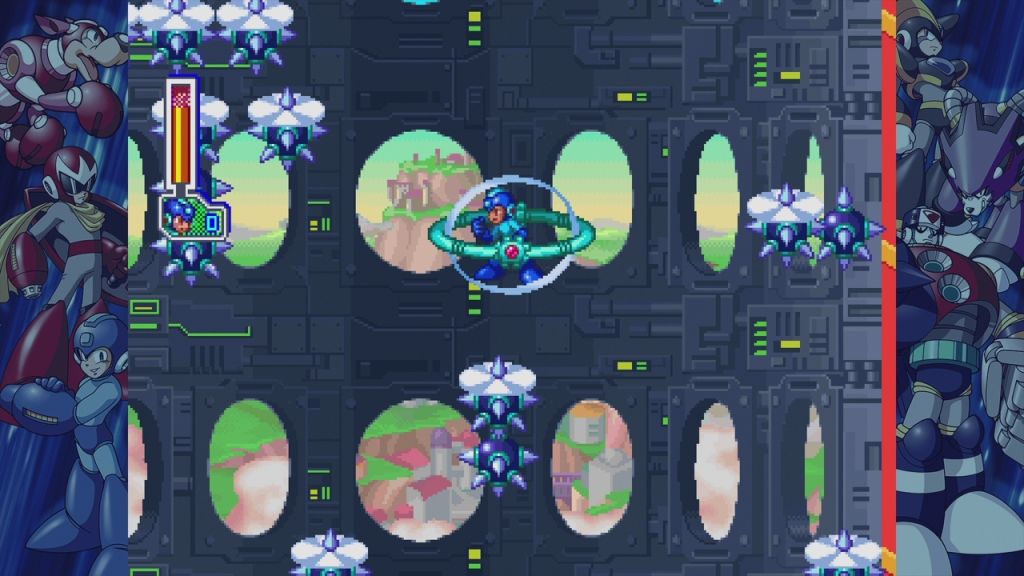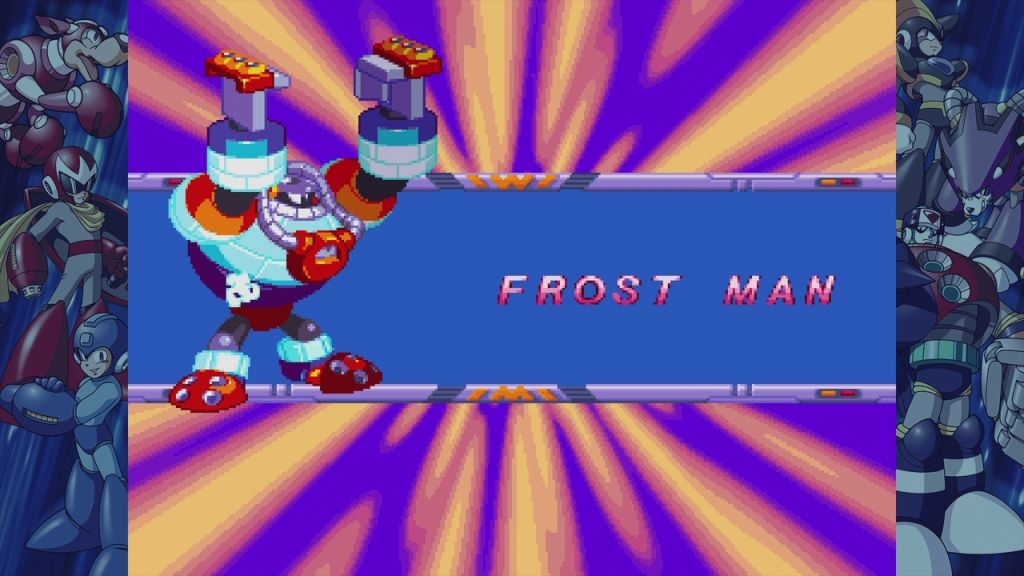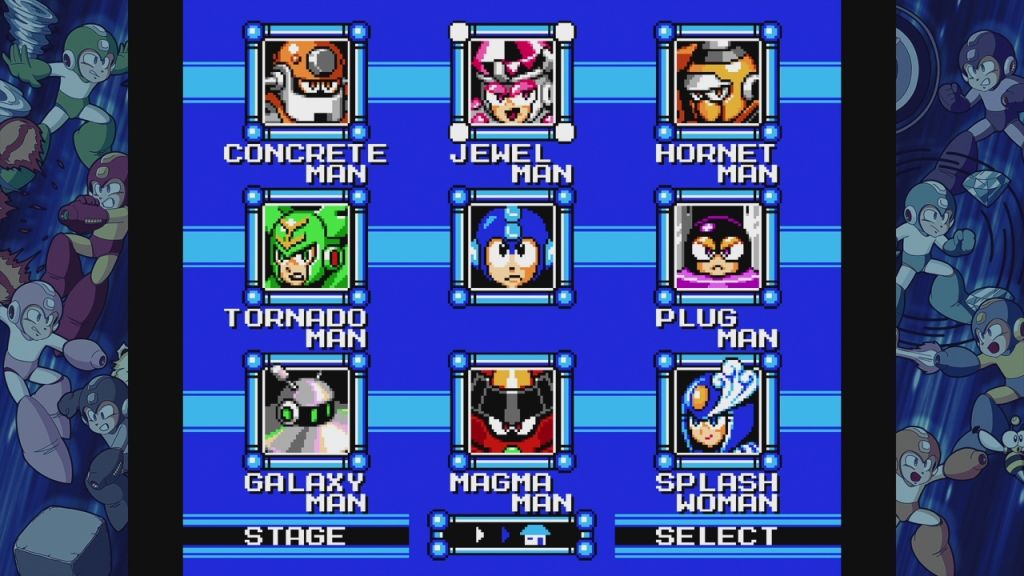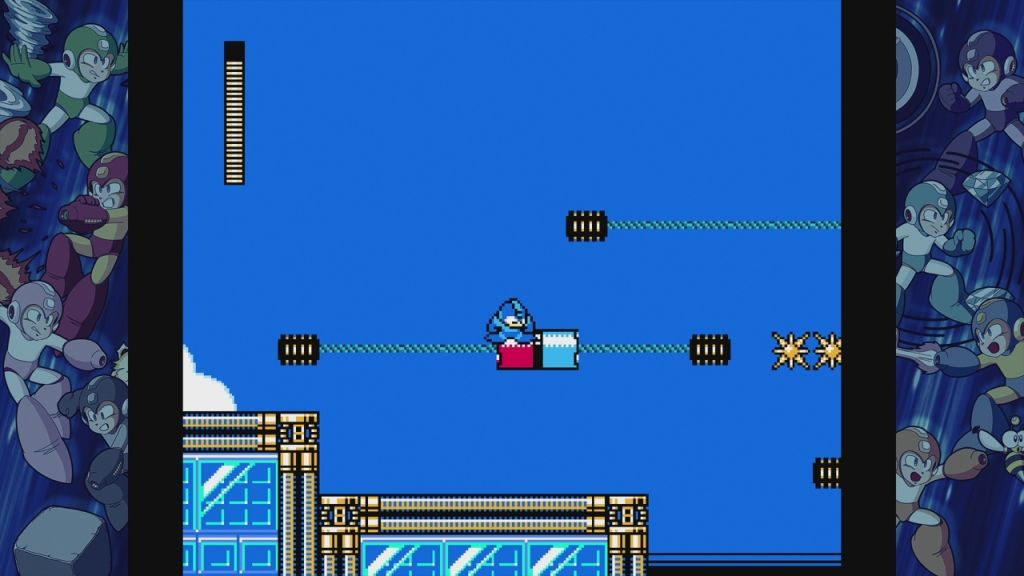Mega Man Legacy Collection 2
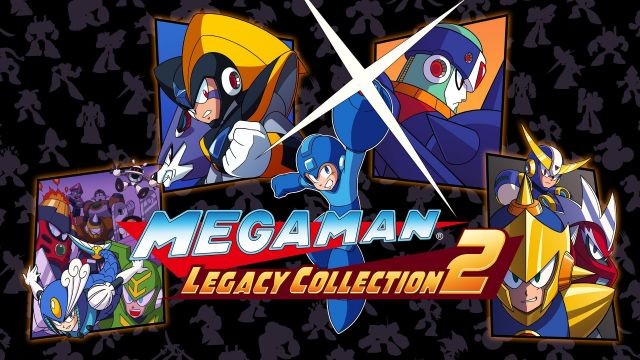
The Mega Man series has been one that holds up very nicely in compilation form. From the original UK and Japan-only Mega Man: The Wily Wars on the Mega Drive/Genesis to the Mega Man Anniversary Collection on the PS2 and finally, the original Legacy Collection a couple of years ago. Having everything available in compilation format allows you to see the evolution of the series, and the second incarnation of the Legacy Collection brings with it fewer titles, but more recent entries in the series overall. The SNES’s Mega Man 7 joins the PS1 version of Mega Man 8 along with the definitive editions of Mega Man 9 and 10, now including all of their DLC.
As an overall value, there is a lot of high-quality gaming here. Mega Man 7 was under-appreciated in its time due to the Mega Man X formula overtaking the classic series in terms of overall design. However, for a classic series game, MM7 looks outstanding and controls well too. The upgraded parts system from Mega Man VI returns in full force and this game debuted the staggered boss tier system where you have four foes to choose from at once. This hurts some of the freedom, but does make picking which enemy to go after first and then figuring out boss weaknesses a bit easier.
Mega Man 8 is a bit of a black sheep for the series, but remains good-looking even if the cinematics are some of the most “so bad, it’s good” in gaming history. Now, the PS1 version being used here is significant due to the Saturn version also including some extra content – so it’s a bit of a shame in that regard. However, as a game, it’s still very good. The stage designs are among the most colorful in franchise history, but the lack of character upgrades hurts things. Visually, the cutscenes look cleaner here than they do on the PS3 via PS1 emulation – so it does at least appear they used the best quality version of the videos.
The Mega Man Anniversary Collection version did have some input lag issues, which was especially troublesome during Frost Man’s fast-paced sled area. On MMAC, you had to plan everything as far in advance as possible – which is tough given the already fast pace. Now, everything is 1:1 and it controls like it did on the original version of the game. This is definitely the best version of Mega Man 8 on the market, and well-worth picking this collection up if you’ve missed it before.
Mega Man 9 came along at the height of the faux-retro movement of the past decade. It brought an 8-bit visual style back to the series and a Mega Man 2-esque overall design. Sliding was taken out and the overall difficulty was bumped up considerably. Extra content was made available later on, like Proto Man, and he’s playable here via an unlock by beating the game. It’s a tough game and that difficulty is retained here – much to the chagrin of folks hoping for an easier experience. Now, the only ease of use feature you get is a multi-shot – which does at least help make up for the lack of a charge shot.
Mega Man 10 was an easier experience and one that I feel holds up better for repeated playthroughs. Mega Man 9 is the one to play to test your skills, while 10 is a better fit for when you just want to kick back and have fun. Proto Man is now playable right away, and gives you basically a Mega Man 3 and beyond play style. He can slide and use the charge shot from MM 4 while also having a shield. He’s an easier character to use, and the game also includes an easy mode that puts failsafes over some of the tougher platforming areas. It’s perfect for casual play, even if the level design as a whole isn’t as good as Mega Man 9’s was.
Strangely, despite being a sendoff to the classic series on the SNES, Mega Man and Bass/Rockman and Forte is not included here. This was a Super Famicom-exclusive game, so it could have been a translation issue – but an English translation was made for the GBA that could be have applied to it. It was an even tougher game than MM9 and possibly the toughest game in the entire series. It being included here would be a nice bonus for those who only had the GBA version as the console was far superior, and more fair because you didn’t have a cropped screen to work around. The collection doesn’t feel incomplete without it – but when you know it’s something they could have put in and didn’t, it’s a bit disappointing. The same also holds true for the Power Battle and Mega Man and Chase games that were included on the PS2 collections – they weren’t essential additions, but added value to the overall package. Since this one is fairly lean on games, it does feel like it’s a bit less of a deal than prior ones, even with the inclusion of more recent games.
Legacy Collection 2 has about the same level of extra content as the first. Things like scanline filters are also here, but those usually just come off like a gimmick. One great thing about playing 8 and 16-bit games via HDMI is that the pixel art truly does shine with that level of clarity – even if many NES-era games used CRT-scanlines as a way to fill in colors that couldn’t be included due to hardware limits. LC 2 also brings a new lineup of remixed stages and other challenges. The original challenges in 9 and 10 are back, with tougher challenges available if you so desire. Mega Man 7 and 8 didn’t have challenges in them, but the new challenges allow you to test your skills if you’ve already beaten it – or gain some practice if you’re a bit rusty.
From a graphical perspective, everything looks as it should. Beyond the increased resolution for the Mega Man 8 cutscenes, you can choose to have the games in their original aspect ratio, or a 4:3 aspect ratio, or even stretched out. That option isn’t ideal, but if you absolutely must have all of your TV’s real estate used up, give it a shot. Otherwise, the 4:3 setup is probably the best overall one to use. It may not be 100% pixel-accurate, but it fills up enough of the screen while still maintaining the same overall shape of CRT TVs and allows the games to look great without stretching things out unnaturally.
Musically, everything sounds accurate – and Capcom has always been good about making sure the music and sound effects of their compilations are as accurate as possible. Poor emulation of game’s audio can take you out of the experience, so having it replicated perfectly is a huge help. As with the original Legacy Collection, the addition of the OST for every included game is outstanding and something that allows those who have never fully appreciated the soundtracks to enjoy them on their own with crystal-sharp clarity.
Mega Man Legacy Collection 2 may not be the best bang for the buck in the history of the franchise, but it does still offer up the definitive way to play Mega Man 7, 9, and 10 – with the PS1 version of 8 being replicated better here than in prior compilations. Extras like an art gallery and the OSTs being available for all of the games are nice perks, and offer up more out of game value than prior collections to be fair. The controls are spot-on as are the graphics, with audio emulation being perfect. It’s a great buy for anyone who loved the series before – or might have missed out on the latter-day classic entries.
Reviewed By: Jeremy Peeples
Publisher: Capcom
Rating: 85%
——————————————————————————–
This review is based on a digital copy of Mega Man Legacy Collection 2 for the PlayStation 4 provided by Capcom.
 Game Over Online
Game Over Online